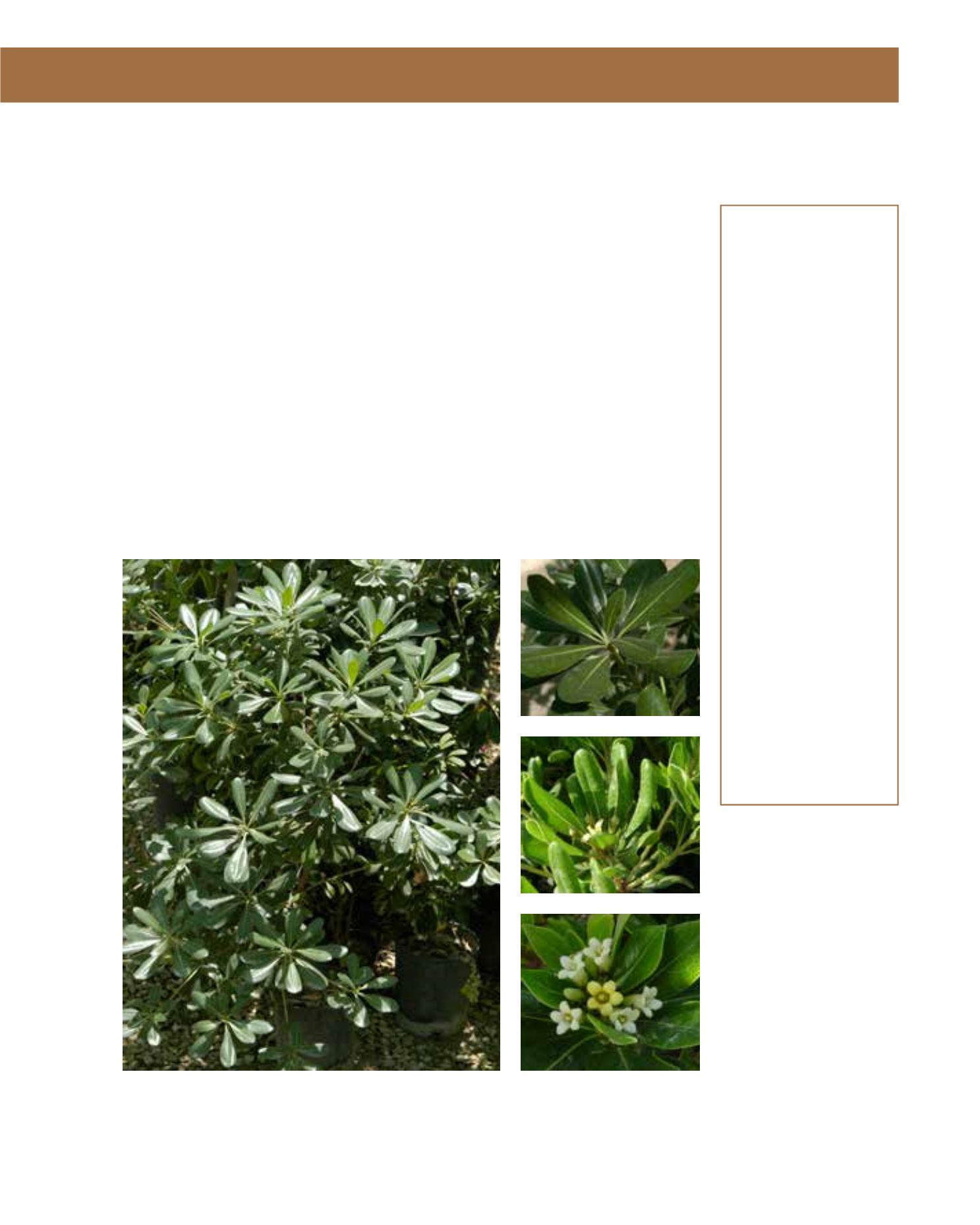

GENERAL
Origin
:
Mediterranean,
sub-tropical
Vigour
:
fairly fast
growing
Humidity
:
semi-humid, very
humid, extremely
humid
Propagation :
sowing and
pricking out,
cuttings
Maintenance :
moderate
CONDITIONS
Urban climate :
vulnerable
Dessication :
vulnerable
Stagnant water :
vulnerable
Irrigation
:
medium
Salinity/ppm :
moderate (2000
ppm)
Hardiness
:
-12°C
SHAPE
Type
:
shrub
Height
:
2 m-5 m
Spread
:
2 m-4 m
Foliage
:
evergreen
FLOWER
Colour
:
white, pale
yellow
Size
:
1.5 cm - 2.5 cm
Period
:
March - May
Smell
:
scented, strong,
gives freely of its
scent
FRUIT
Type of fruit :
capsule
Fruit size
:
1 cm - 1.2 cm
Pittosporum tobira is also known as Mock Orange. The shrub is native to central China, Japan
and Korea. It prefers a Mediterranean to subtropical climate. It grows to a height of between 2
and 5 metres, with a spread of up to 4 metres. The shrub is usually regularly rounded in shape,
and the foliage is evergreen. The leaves are dark green on top and light green underneath. The leaf
shape is convex-obovate and entire, and the leaves are arranged alternately. The flowers are white
or pale yellow, with a pleasant fragrance. The fruits are pale olive-green round capsules with a
size of 1 cm. Maintenance requirements are minimal; occasionally, pruning will lead to a denser
growth. Propagation is by sowing and pricking, by cuttings or through self-seeding. Mock Oran-
ge does not like stagnant water; however, it needs medium irrigation with a low salinity content.
Like all evergreen plants which grow in Mediterranean climates, P. tobira loves a microclimate
with sufficient air humidity. Accordingly, it is vulnerable to desiccation. It is, however, frost-
tolerant. This bird- and bee-attracting plant will provide shelter and screens in parks or private
sheltered gardens. Pittosporum can be pruned as a topiary, and is useful in pots. Considered
should be the fruit drop which is maybe not desired next to pathways. The shrub will be a recom-
mended as dominant plant or as grouped planting and also as a flowering hedge. Occasionally
seen in Arriyadh, in the Diplomatic Quarter for example, P. tobira often shows signs of sunburn
and chlorosis.
236
Pittosporum tobira,
Pittosporaceae
Mock Orange
















